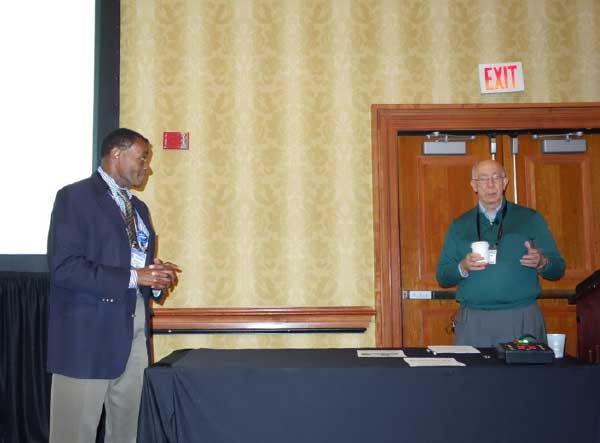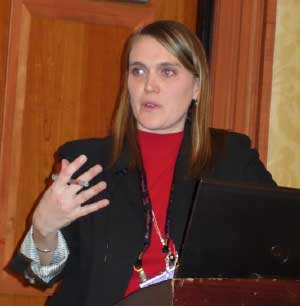The Social Legacy of the Manhattan Project
By Allen Sessoms
The session on the social legacy of the Manhattan Project brought together three experts from very different backgrounds to look at the matter. The first was Daniel Kevles, emeritus professor of the history of science at Yale University and the author of The Physicists, an excellent study of some of the key players in modern American physics. He spoke of the environmental legacy of the project, in particular the environmental damage done at the Hanford reservation in Washington State, especially as it affects the Native American peoples in the area. Kelsey Davenport of the Arms Control Association discussed the Nuclear Nonproliferation Treaty (NPT), its evolution from the Atoms for Peace proposal of president Dwight D. Eisenhower, its successes and current challenges. Wrapping up the session was Carlton Stoiber, a more than 30 year veteran of the State Department, who spoke in broader terms of the legacy of Atoms for Peace, its successes, such as creating the International Atomic Energy Agency (IAEA) and the NPT, its failures, such as giving cover for nuclear weapons programs in India, Pakistan and North Korea, and ongoing challenges to the peaceful uses of atomic energy.

Social legacy of Manhattan project: Allen Sessoms, Daniel Kevles.

Social legacy: Kelsey Davenport

Social legacy: Carlton Stoiber
The articles in this issue represent the views of their authors and are not necessarily those of the Forum or APS.
